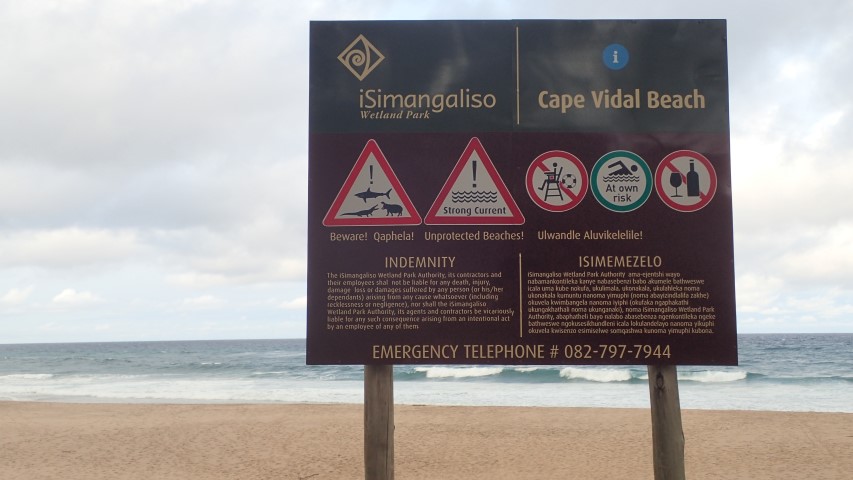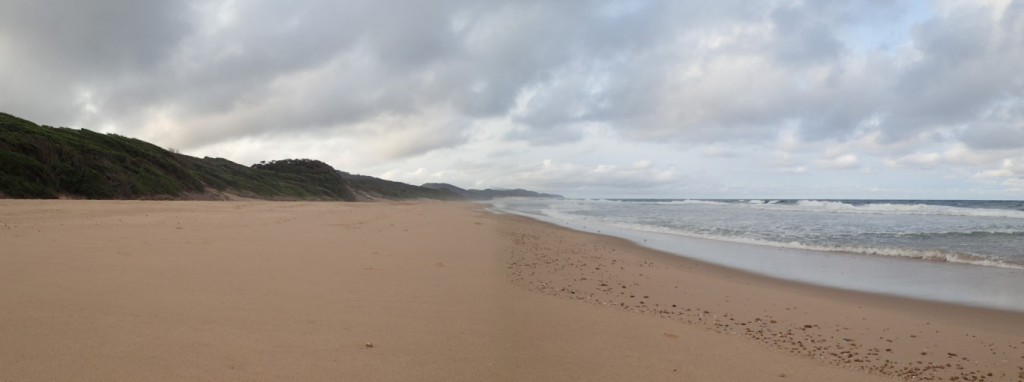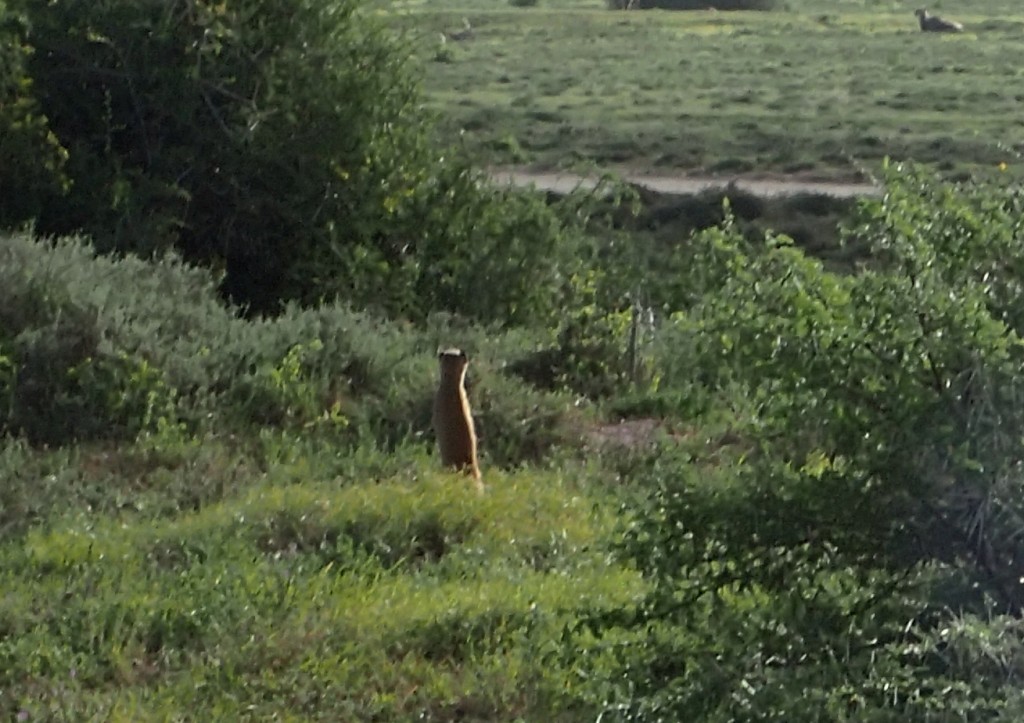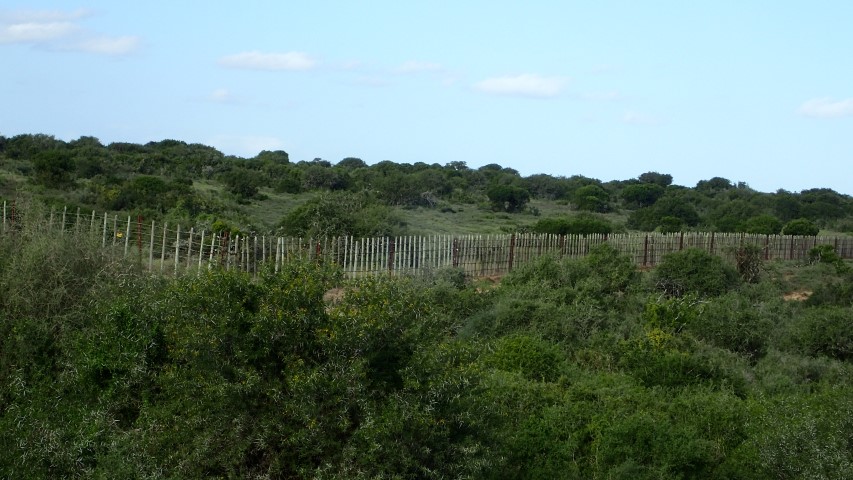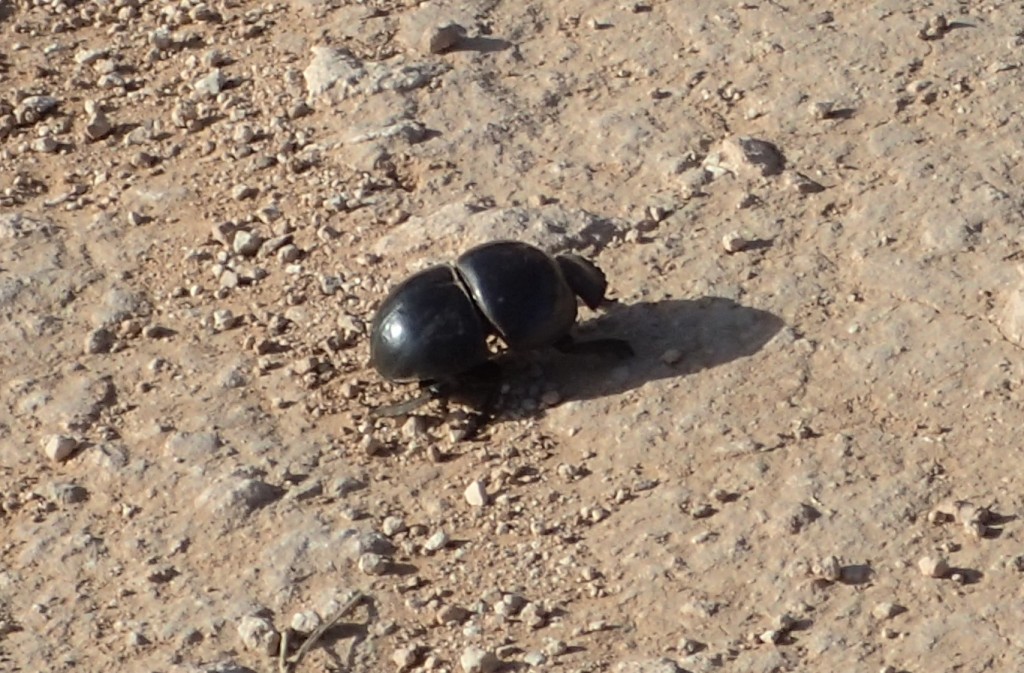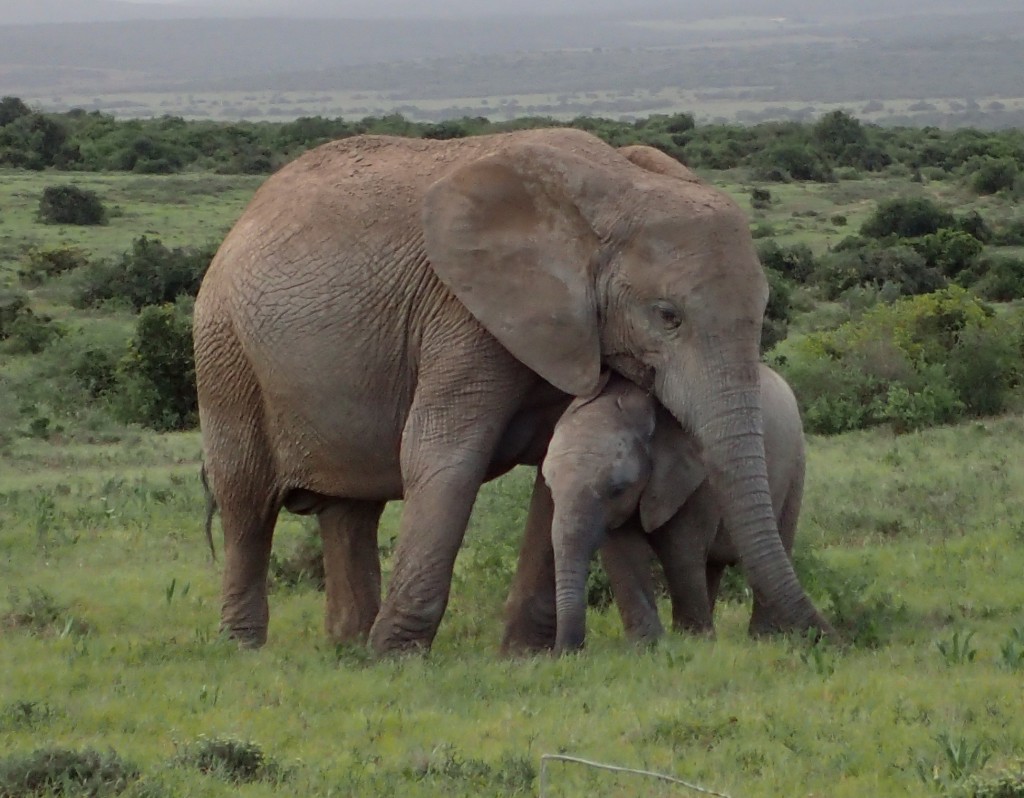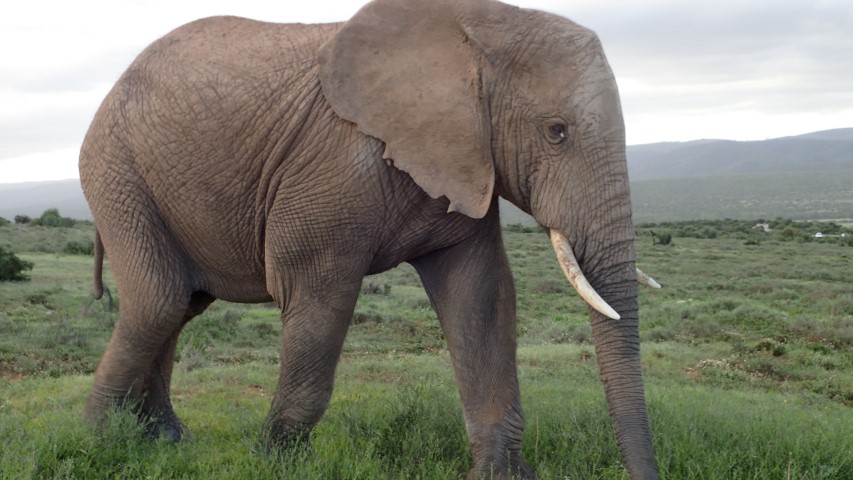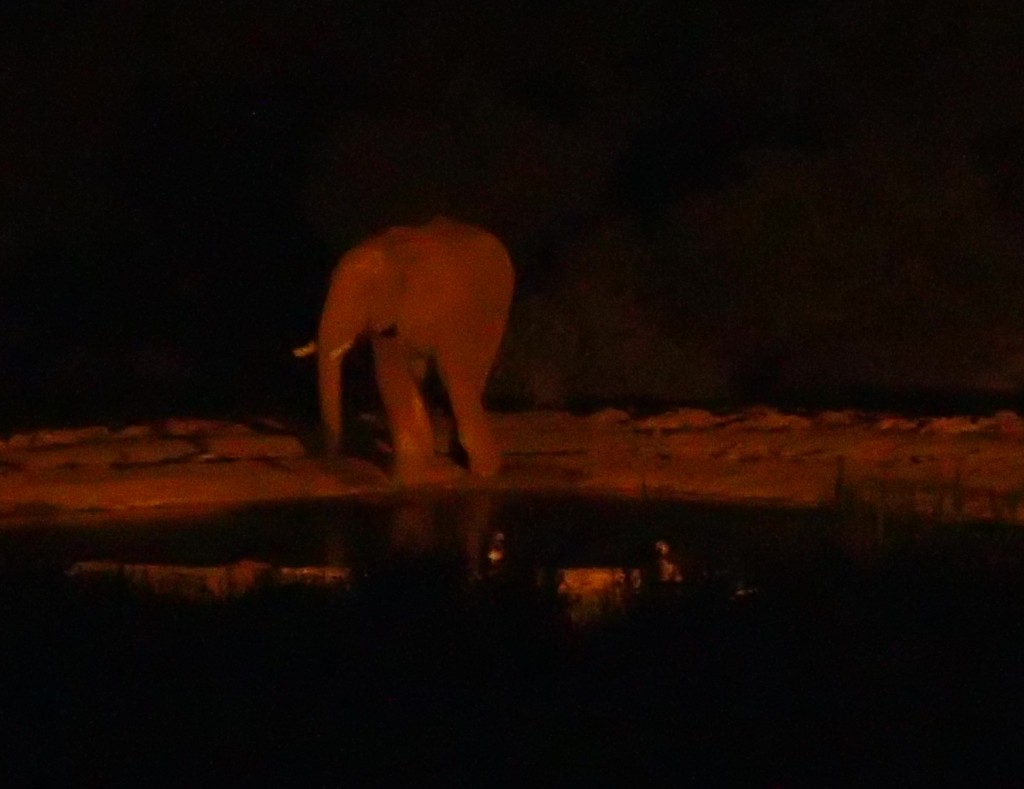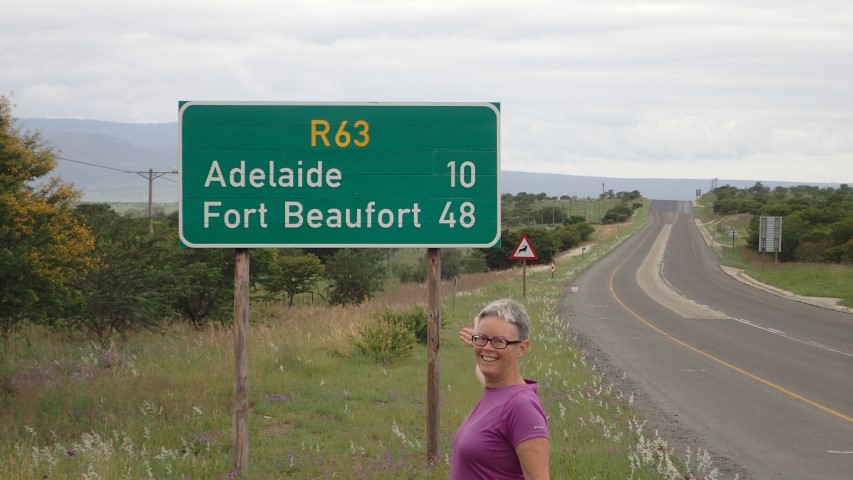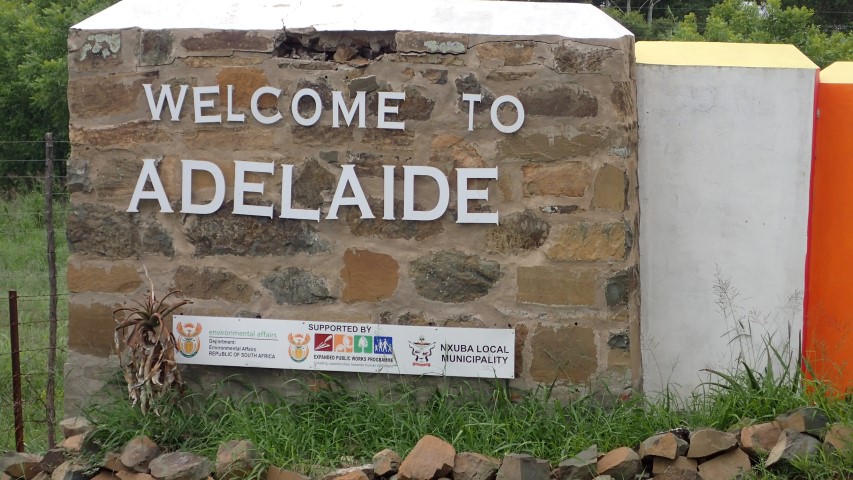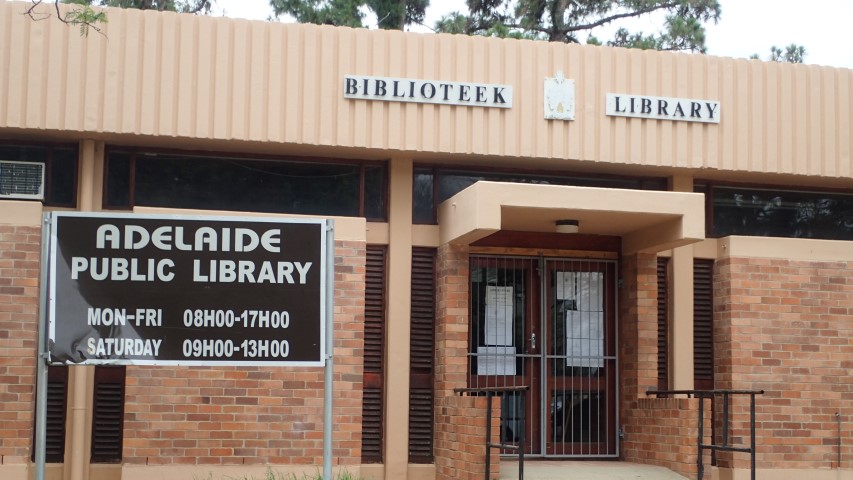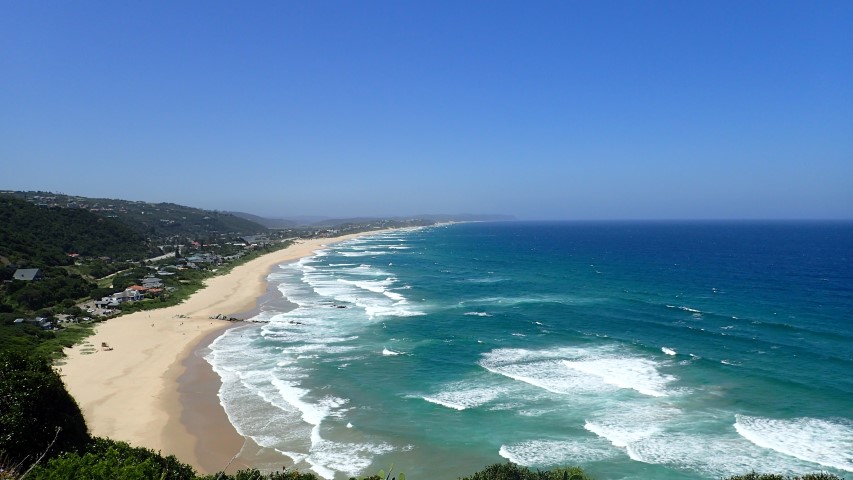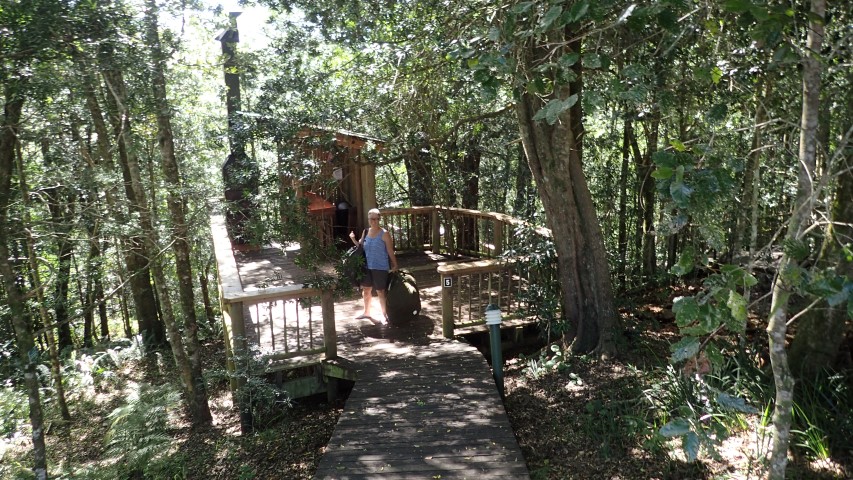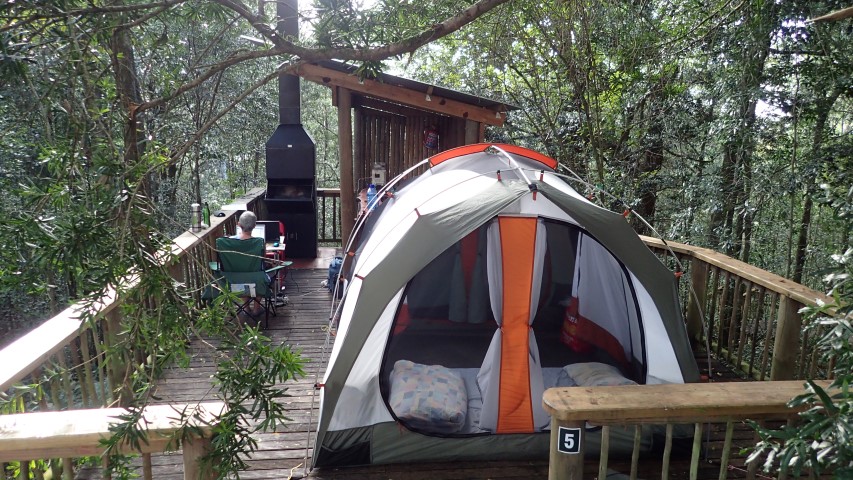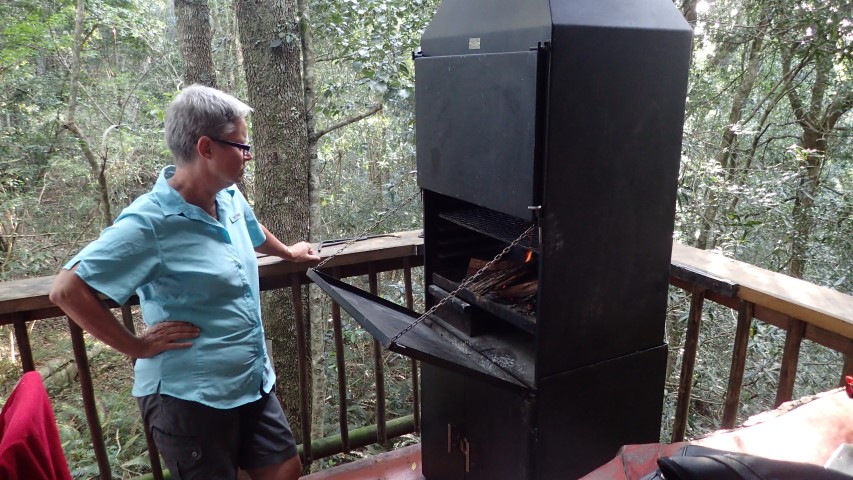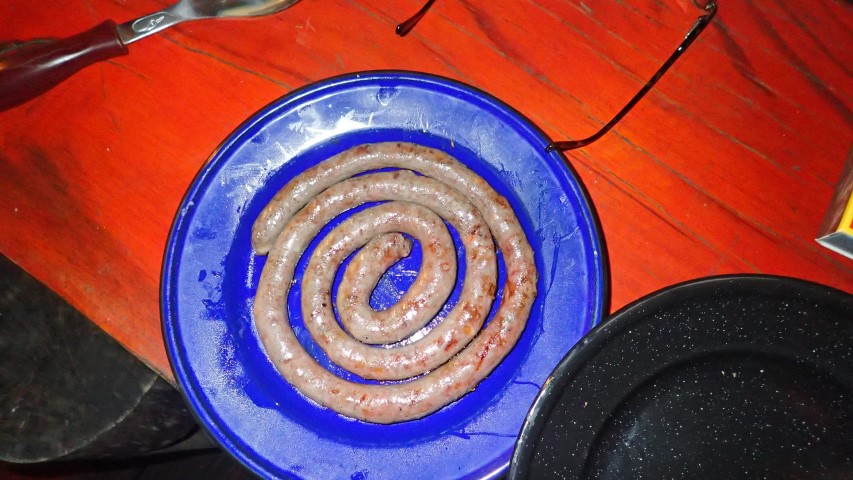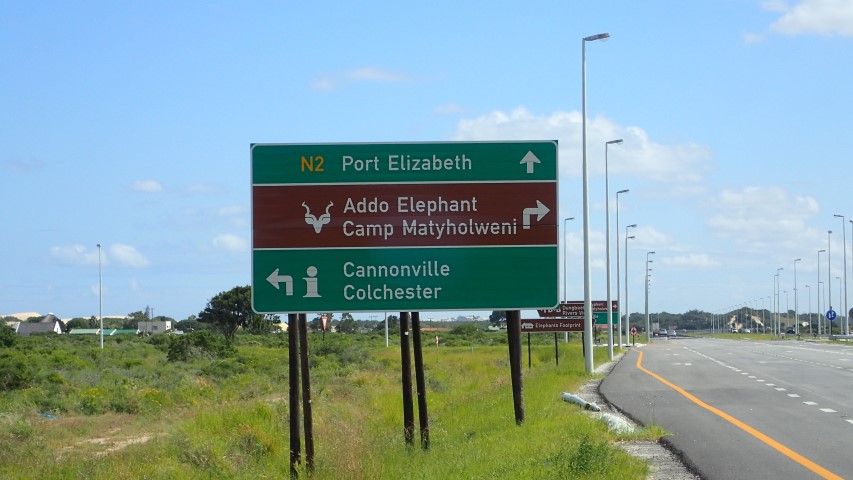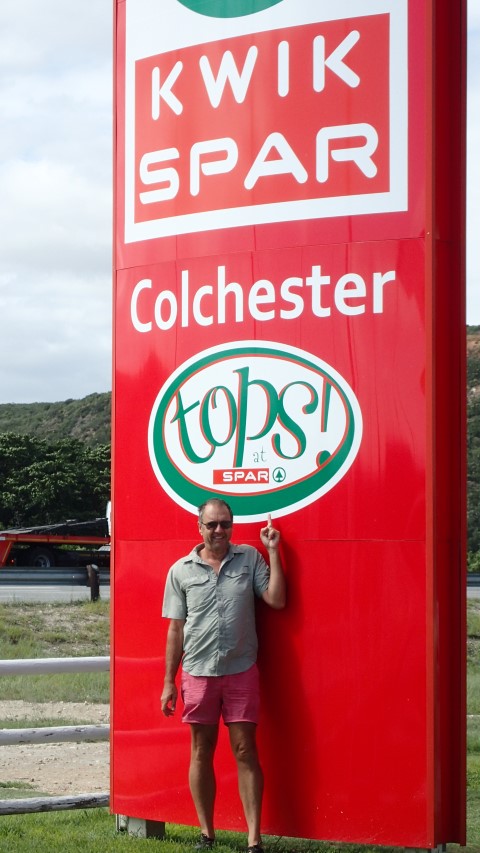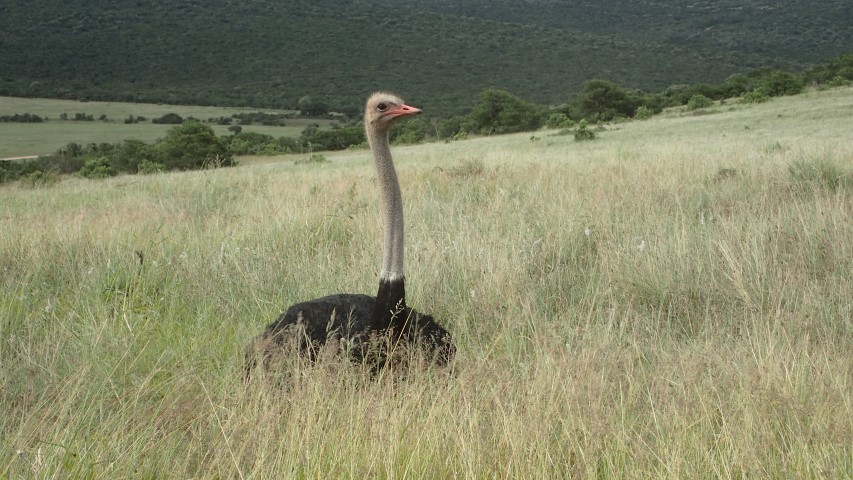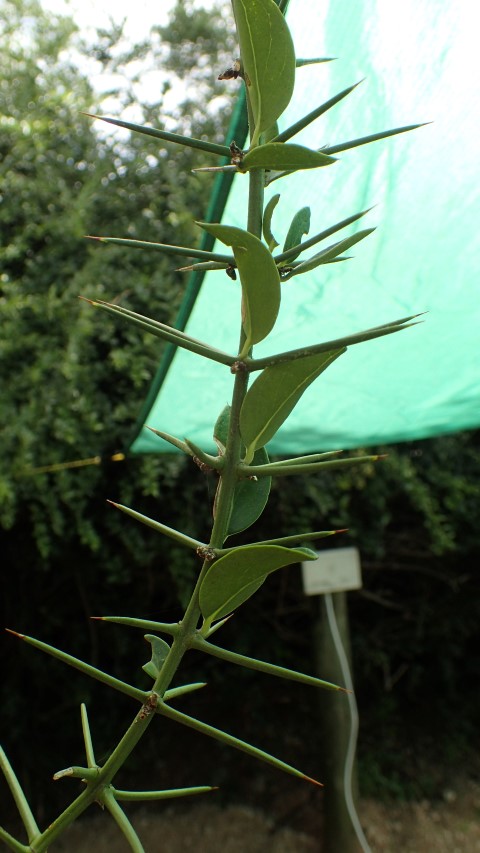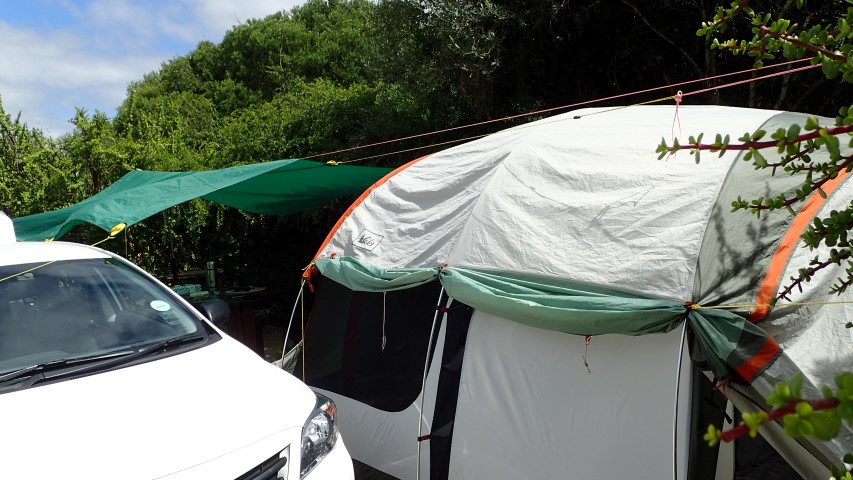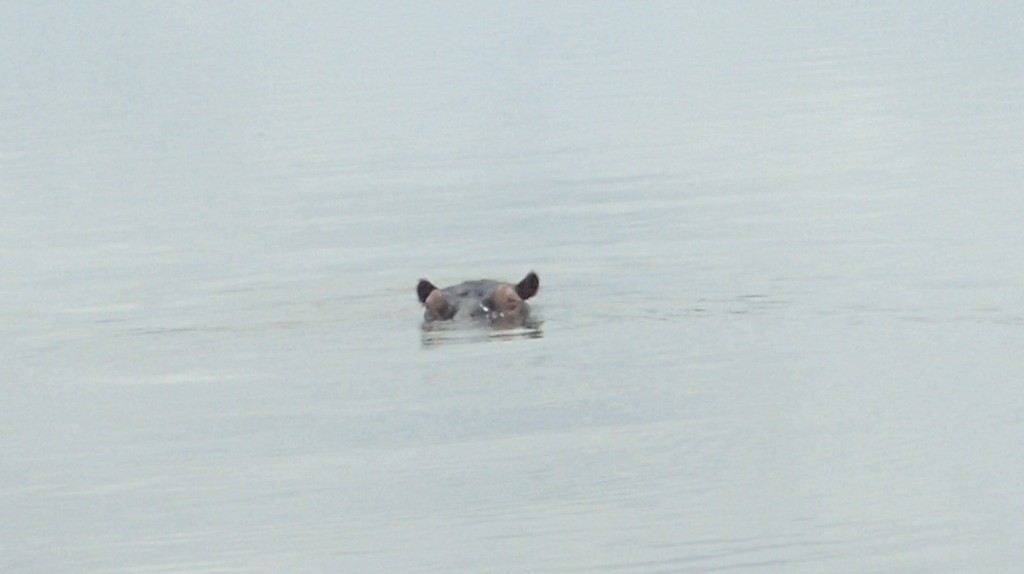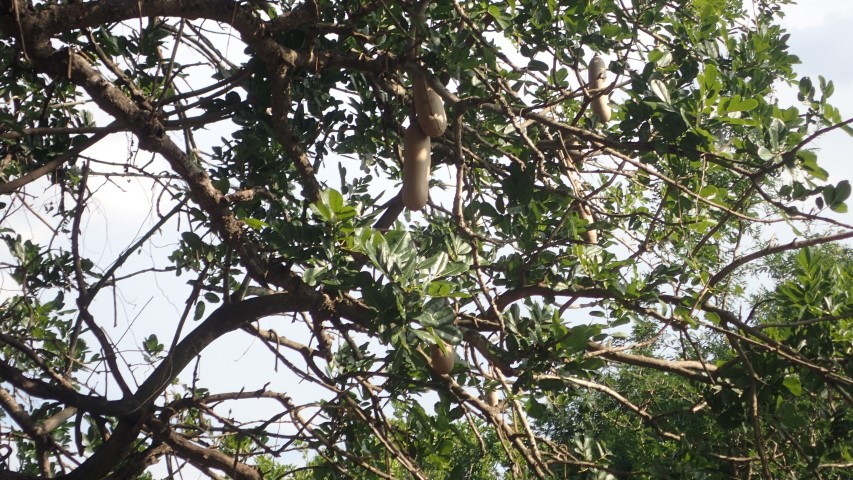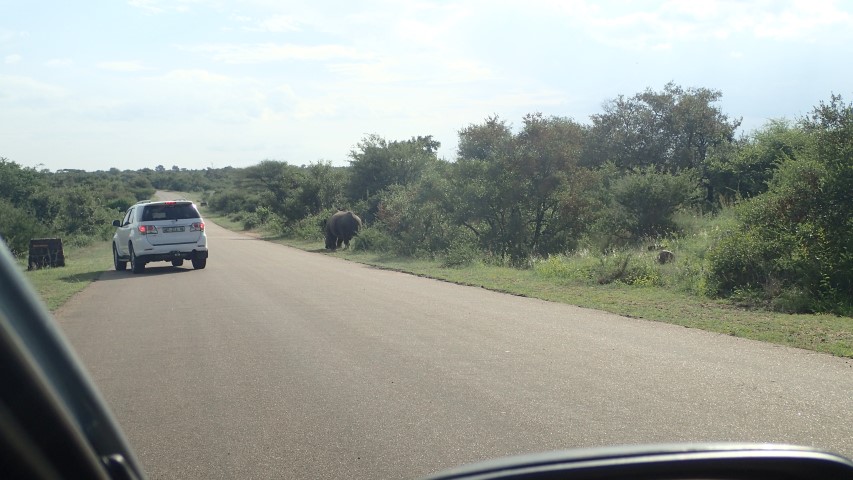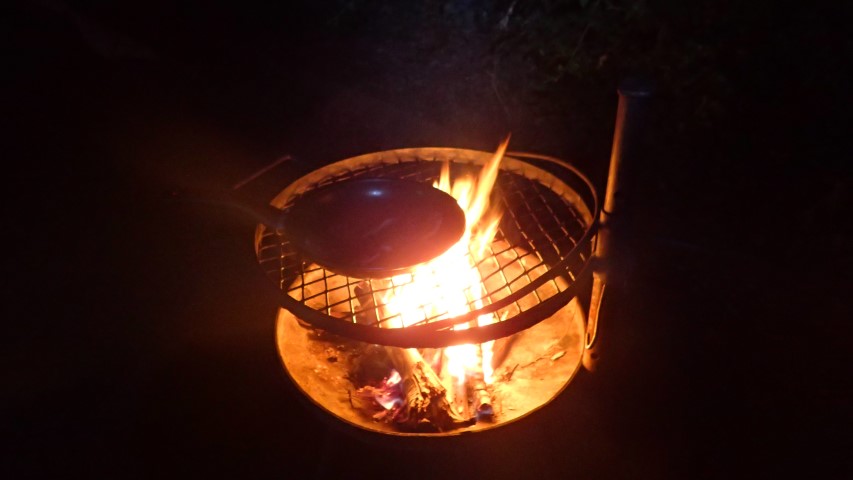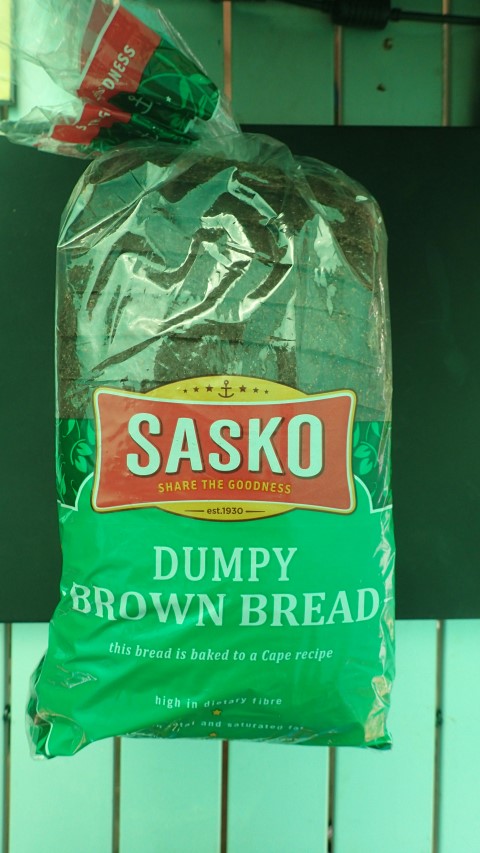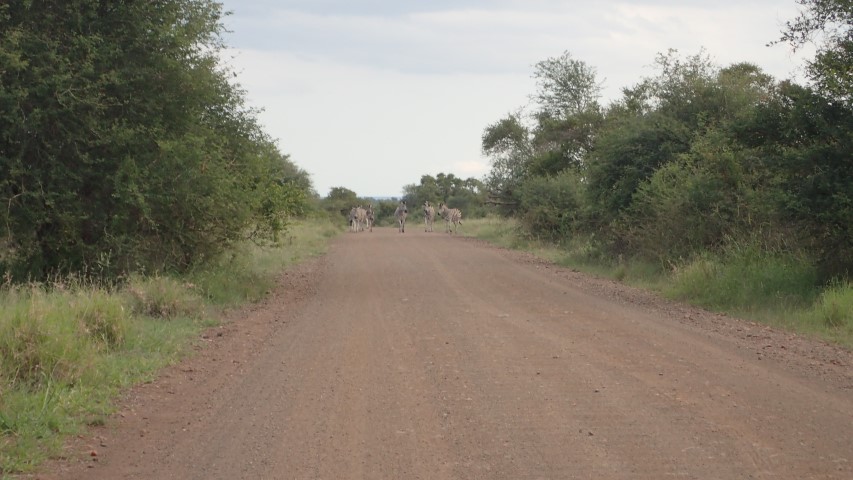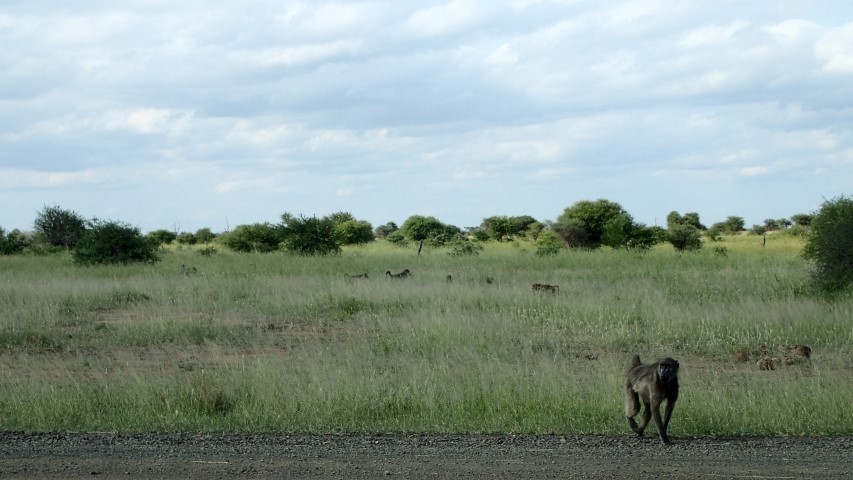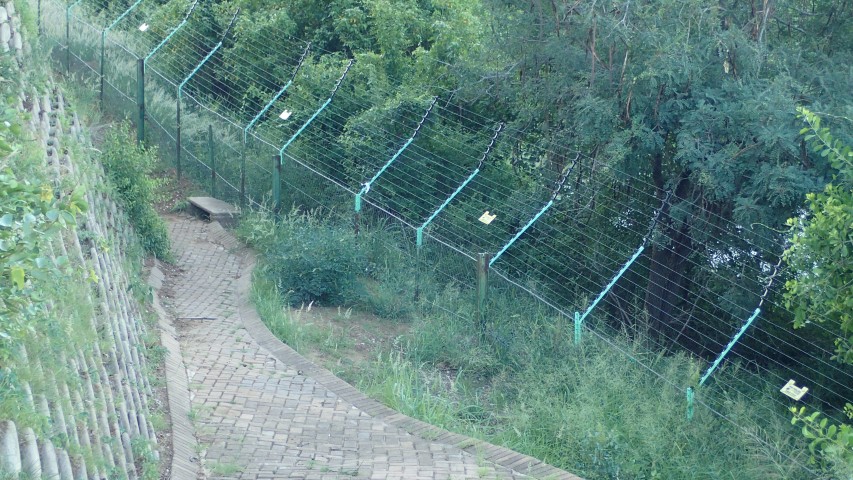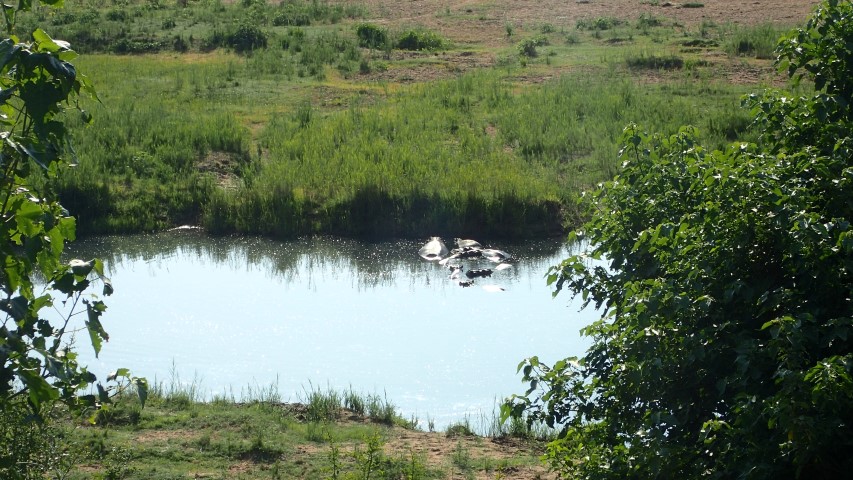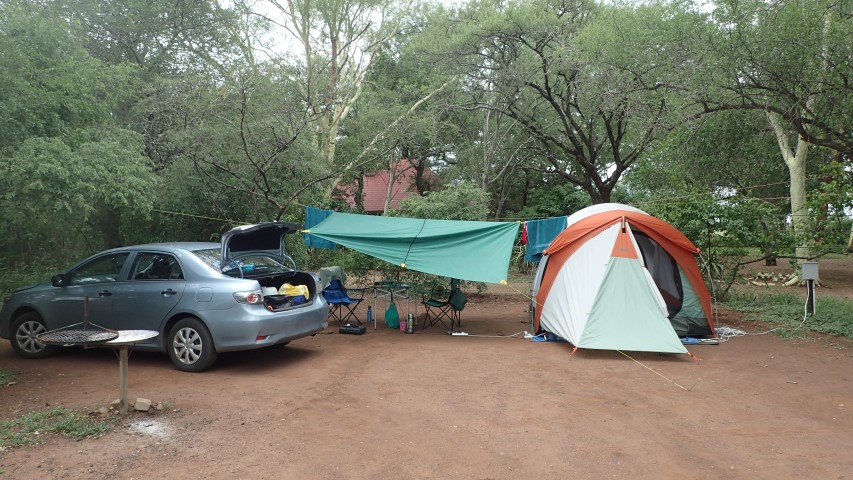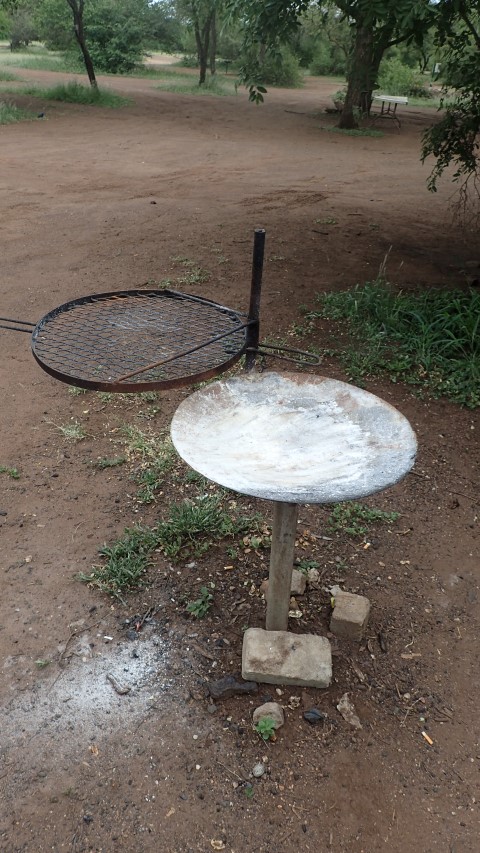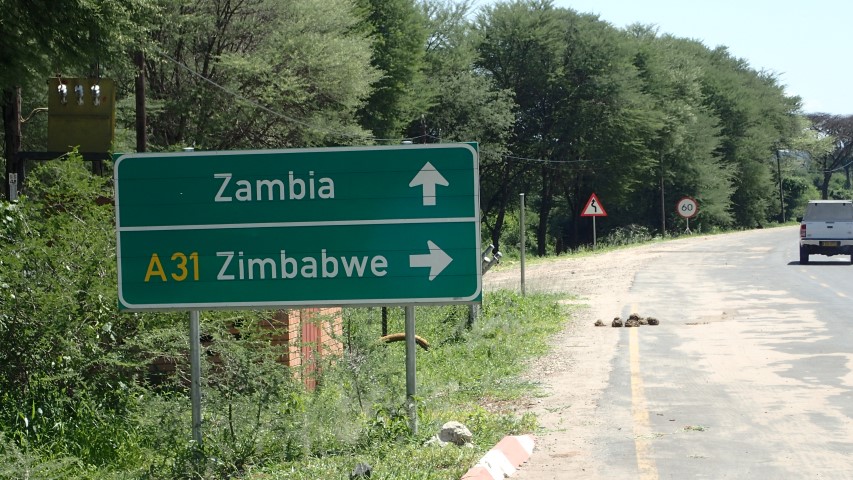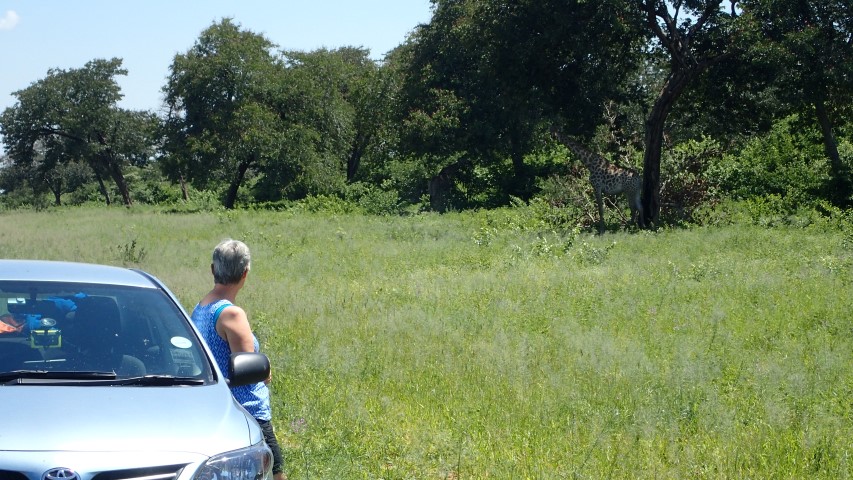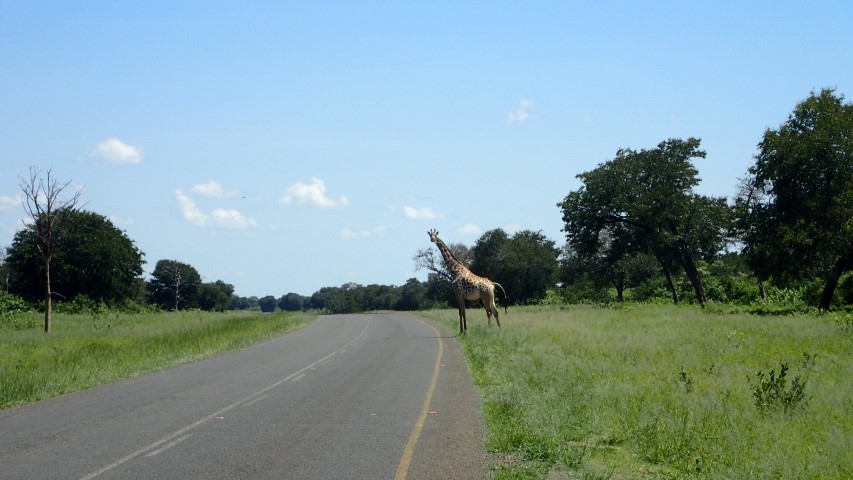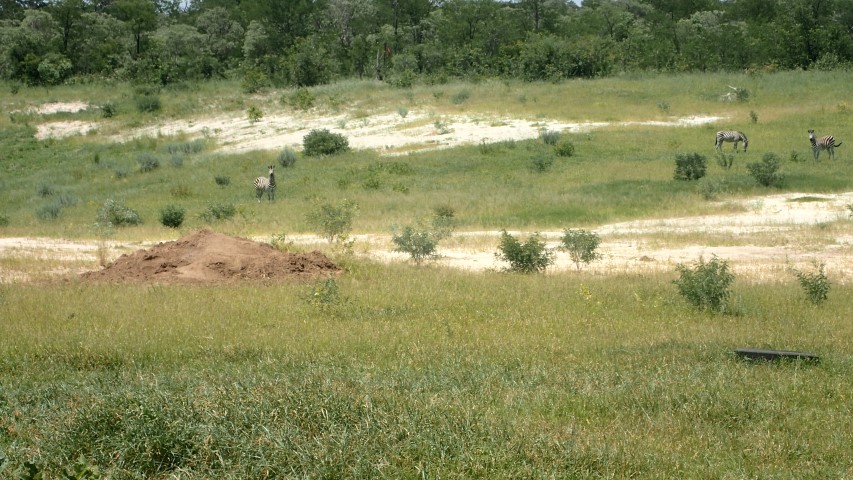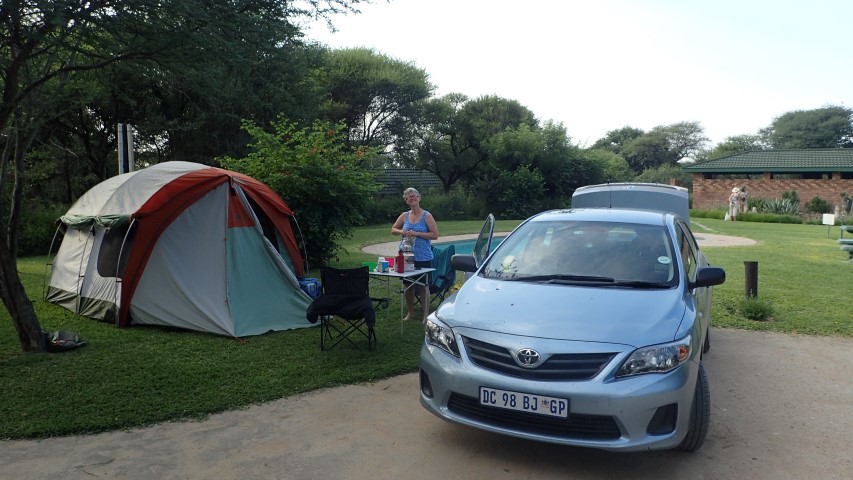For our last couple of days and nights, we’re at a wildlife park on the north coast. Its one of the oldest and largest conservation areas in South Africa and goes as far north as the Mozambique border. The reserve is very long and narrow and includes several large freshwater lakes, plus Lake St Lucia which is actually a vast estuary for several rivers. It includes a marine sanctuary, a wide range of game animals, has breeding grounds for 2 marine turtle species, is one of South Africa’s top dive locations, and it seems that everyone apart from us is keen on fishing. As we drove to the campground we saw a zebra, a few antelopey thingys (couldn’t tell what type as they were too far away), and then there were a couple of new little antelopey thingys grazing near our tent site when we got here. Not sure what they were – some kind of grysbok or duiker, perhaps.
We’re staying at Cape Vidal campground, which is about 35kms north of the park entrance near St Lucia. This reserve isn’t part of the SA National Parks group, so our Wild Card doesn’t cover it and we paid an entrance fee in addition to the exhorbitant campground site fees. The entrance fee was okay, but at $55 per night for a powered site, this is the most we have ever paid to pitch a tent. It makes what we paid in Norway in 2013, and at Cradle Mountain, Tassie at Easter last year look reasonable!
The campground is fine, but nothing special – we paid less than 1/3 the night we pitched the tent on the deck in the forest and THAT was special. This one has sandy sites, unimaginative allocation system where we just got the next empty site in the row, when there are other more secluded sites that we’d prefer. Then the next people to come along got the site next to us, and so on.
The monkeys are here in abundance, but none have really bothered us yet. We sat and cooked in the tent last night, which was a good thing in more ways than one as we realised this morning that we’re back in a malarial zone. But just now I got up and walked 5 paces to put something in the car, and in that time a monkey came and sat on the laptop to check out if we had any food on the table worth stealing. They are swarming all over our next door neighbour’s tent and stuff, but he hasn’t left anything interesting out either.
So now we’re at the ‘what was I thinking’ stage of the trip. Happens every time – we end up with a strange collection of food that don’t go well together, and I don’t remember why I bought them in the first place. It’s not too bad though, we don’t have a lot left, apart from most of a kilo of ‘cake flour’. Every supermarket here sells 2 kinds of plain flour – cake flour and bread flour. Each has different protein levels, depending on what you want to use it for. I guess cake flour is the same as our plain flour.
Tomorrow is our last day, we fly out around midday on Saturday. We’ll pack up what we’re taking home, throw out and give away what we’re not, and drive the 600kms to Joburg. This afternoon we’ll drive around part of the reserve and hopefully see some wildlife
